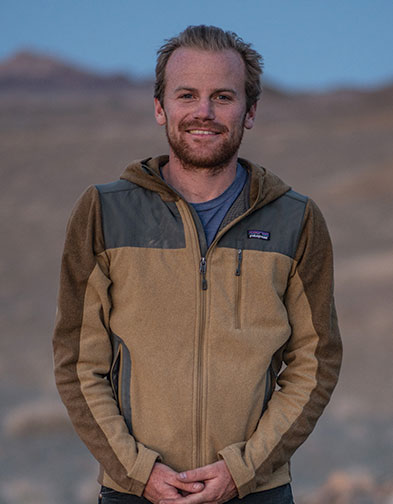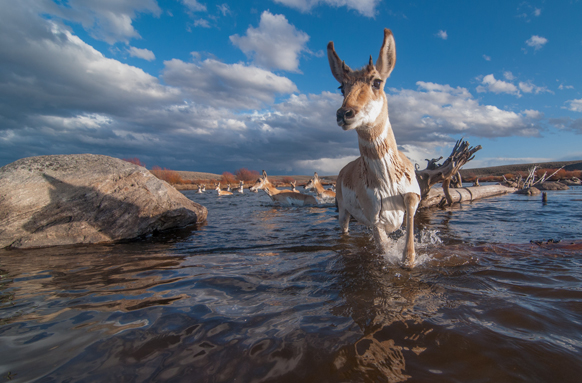Haub School of Environment and Natural Resources MVP
Published September 17, 2025

Joe Riis (Courtesy photo)
Photojournalist Joe Riis
By Micaela Myers
Growing up hunting and fishing around his hometown of Pierre, S.D., Joe Riis longed to live near the mountains and jumped at the opportunity to study wildlife biology and environment and natural resources the University of Wyoming. Supportive professors and hands-on experiences set Riis up to hit the ground running as a successful photojournalist and filmmaker after graduation in 2008. Among his many accomplishments, Riis is a National Geographic Explorer and published the award-winning book “Yellowstone Migrations.” His cinematography is featured in the BBC “Asia” TV series playing this year.
As a student, did you know you wanted to pursue wildlife photojournalism?
I wasn’t sure if it was possible to pursue wildlife photojournalism as a real job.
The only real employer that I knew of was National Geographic Magazine. I figured
the competition for those jobs was high, but that became my goal. I wanted to see
the broader world, have experiences in nature and feel creative.
I became interested in wildlife photography while in high school taking pictures of
deer in my backyard with my mom’s old film camera I found in our basement. But I didn’t
really see photography as an option as a job until I was junior at UW. That was when
everything started to align for me. I received an arts and sciences independent summer
study award and spent that summer photographing a tern story on the Missouri River.
After I graduated, I started photographing pronghorn migration, leading to a 17-plus-year
project photographing ungulate migrations in the greater Yellowstone ecosystem.
I love looking at pictures, and I believe in the power of the visual image to effect
change in people. It’s the universal language of the world. I also like spending time
alone in nature — sitting, waiting and letting time unfold. Turns out, this is important
to documenting wildlife behavior in its truest form.

Photo by Joe Riis
What have been some of the highlights of your life and career thus far?
The biggest highlights of my life have been the births of my kids in 2019 and 2023.
Workwise, some highlights have been getting my first feature assignment from National
Geographic in 2011 to photograph the gobi bear in Mongolia and seeing my photographs
in that yellow-bordered magazine. Other highlights include the cover of Science, an
Emmy award, an award from the Prince of Monaco for elk migration photography, a yearlong
photo fellowship from National Geographic Society, the publication of my first book,
and hearing David Attenborough narrate a gobi bear story that I filmed in 2024.
What are you working on now?
Pronghorn are my favorite animal, and I’ve continued to photograph and film them since
I graduated. My current project focuses on the Bighorn pronghorn migration, and I’ve
been following that herd for the past three years. I hope to release some of that
work in early 2026.

